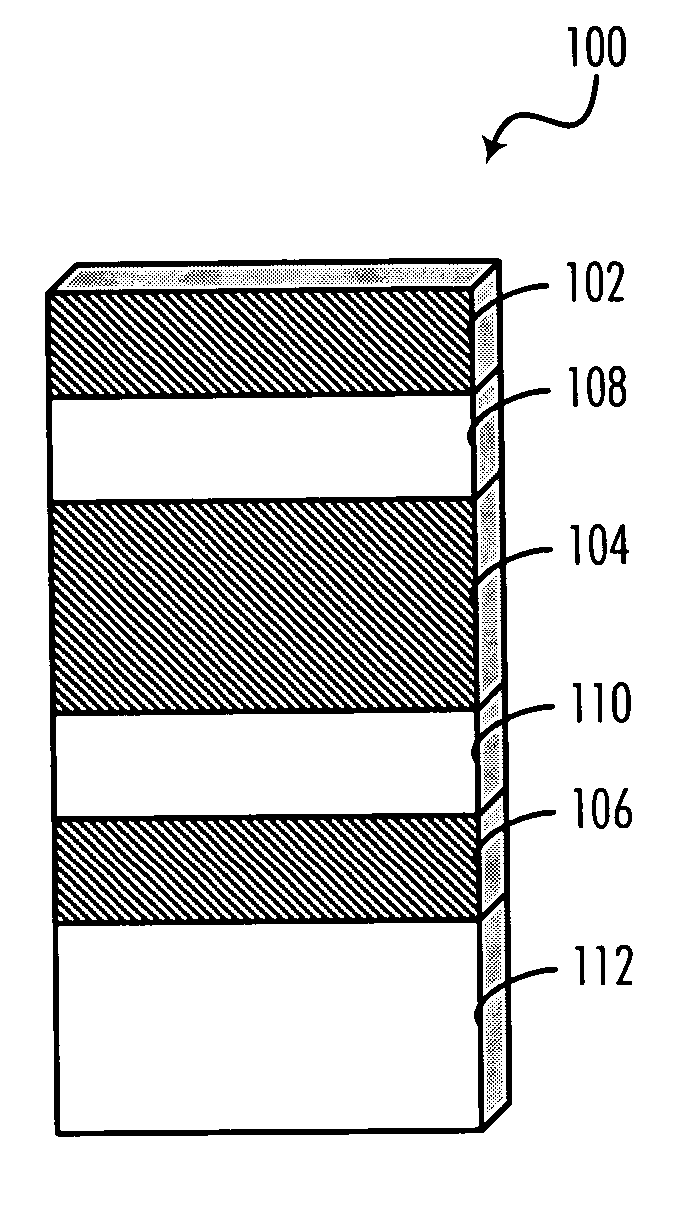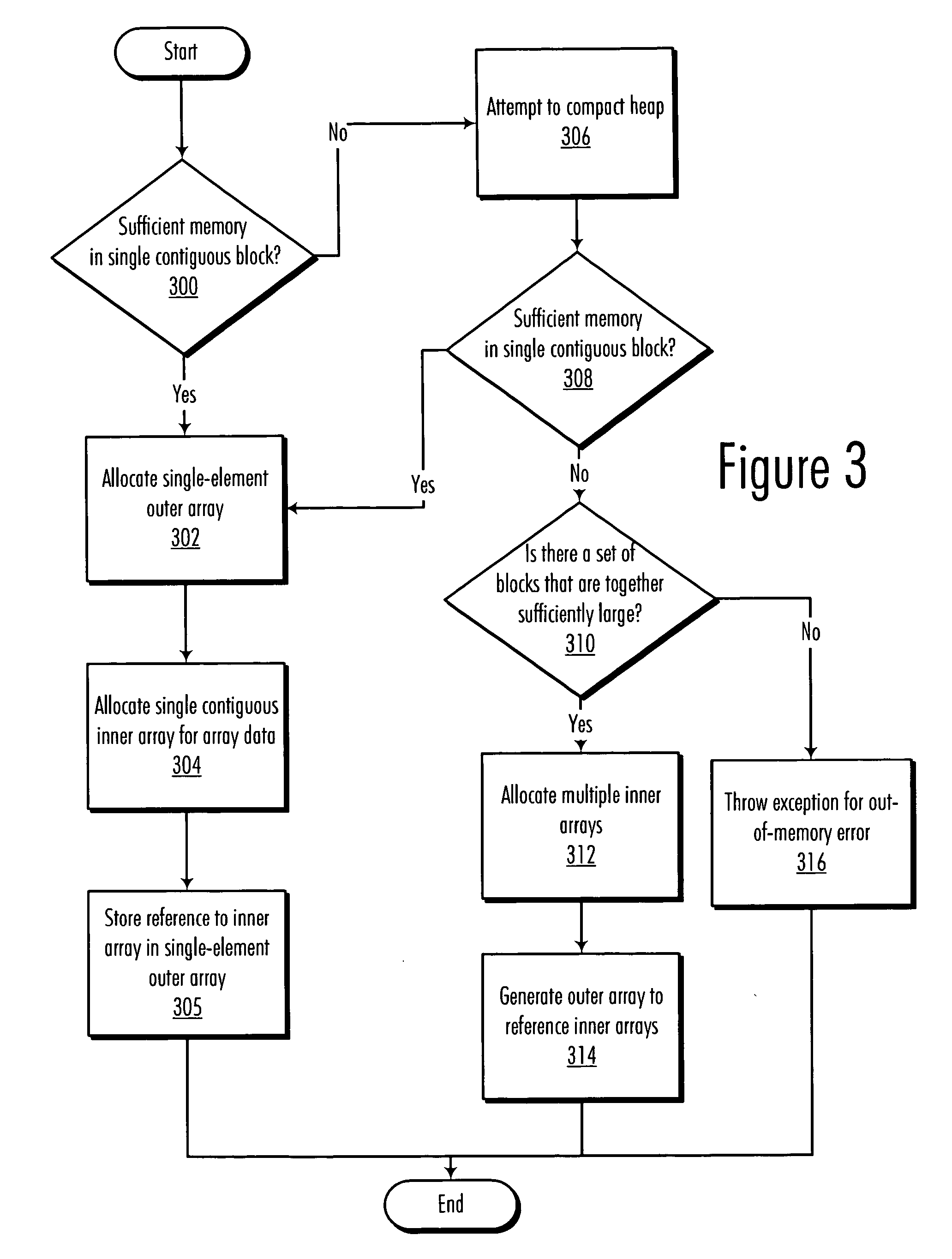Method and system for optimizing array sizes in a JAVA virtual machine
a virtual machine and array technology, applied in the field of memory management in the virtual machine, can solve the problems of preventing a program from being able to allocate memory, affecting the work efficiency of garbage collectors, and not generally supporting operations that are primarily hardware-specific, so as to reduce the impact of segmentation scheme on native cod
- Summary
- Abstract
- Description
- Claims
- Application Information
AI Technical Summary
Benefits of technology
Problems solved by technology
Method used
Image
Examples
Embodiment Construction
[0024] The following is intended to provide a detailed description of an example of the invention and should not be taken to be limiting of the invention itself. Rather, any number of variations may fall within the scope of the invention, which is defined in the claims following the description.
[0025]FIG. 2 illustrates the main concepts of the array allocation method employed by JAVA virtual machine implemented in accordance with a preferred embodiment of the present invention. Rather than allocating a single contiguous array in response to a dynamic array allocation request, a preferred embodiment of the present invention actually allocates a plurality of arrays, an outer array 200 and one or more inner arrays (represented here by memory regions 210, 212, and 214 in heap 208), which collectively make up the full array. It should be noted that outer array 200, like inner arrays 210, 212, and 214, is also allocated on heap 208.
[0026] Each of the elements of outer array 200 (element...
PUM
 Login to View More
Login to View More Abstract
Description
Claims
Application Information
 Login to View More
Login to View More - R&D
- Intellectual Property
- Life Sciences
- Materials
- Tech Scout
- Unparalleled Data Quality
- Higher Quality Content
- 60% Fewer Hallucinations
Browse by: Latest US Patents, China's latest patents, Technical Efficacy Thesaurus, Application Domain, Technology Topic, Popular Technical Reports.
© 2025 PatSnap. All rights reserved.Legal|Privacy policy|Modern Slavery Act Transparency Statement|Sitemap|About US| Contact US: help@patsnap.com



